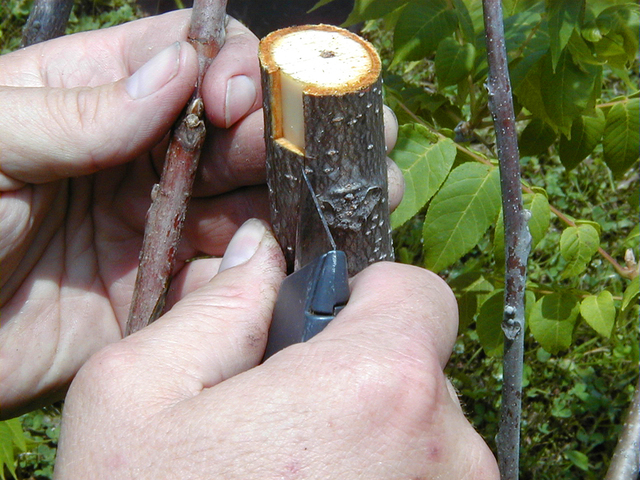Peter asks: I have just bought a farm that has lots of common mangoes. I have been advised to pull them all out and replant. Are there any alternatives you can recommend?
Peter asks: I have just bought a farm that has lots of common mangoes. I have been advised to pull them all out and replant. Are there any alternatives you can recommend?
Tropical Gardener answer: Pulling out all of the plants and replanting could be costly and take a while before you get fruit on the new trees. You might consider finding a value added use and market for the common mangoes or consider grafting scions from preferable varieties onto some of the existing common root stock.
At this year’s Mango Festival, on Aug. 6, a local farmer and mango grafter, Harold Moodie, will be doing a demonstration of his technique at noon. Try to catch it and discuss the feasibility of grafting onto your existing trees with him.
Moodie will begin his presentation explaining how grafting can insure that you get the mango varieties you want. He will also discuss rootstock selection. Common mango seed is often used because it is readily available, has a strong root system and is well adapted to Hawaiian soils and climate. It is also the ancestor of many varieties we have today and so is usually compatible with them.
Though grafted trees may take a few years to fruit and might require extra maintenance to remove suckers below the graft, it is an inexpensive way to get better fruit varieties from common mango trees as long as you have easy access to the desired scions. Grafting can also save you some time since the scion wood is mature and should start fruiting as soon as the graft and the tree are strong enough to support fruit.
Moodie will demonstrate a cleft or wedge graft which is both basic and effective. He will work with rootstock and scion wood that are about the same diameter so that the cambium layers will align easily. The graft can work if the cambiums align on at least one side. He will show how to make the cuts with a very sharp grafting knife, do the alignment of the cambium layers, secure the graft and wrap it with parafilm.
Once you have seen this demonstration and get your questions answered, you should be able to replicate the process with success on your own. If you feel you need more information, go to www.fairchildgarden.org. They have a publication on mango propagation that includes grafting. At the end of the publication you can find links to videos on fruit tree grafting as well.
Some questions that appear here were originally directed to Kona’s Certified Master Gardeners.
You may contact them with questions at konamg@ctahr.hawaii.edu.
Diana Duff is a plant adviser, educator and consultant living on an organic farm in Captain Cook.

